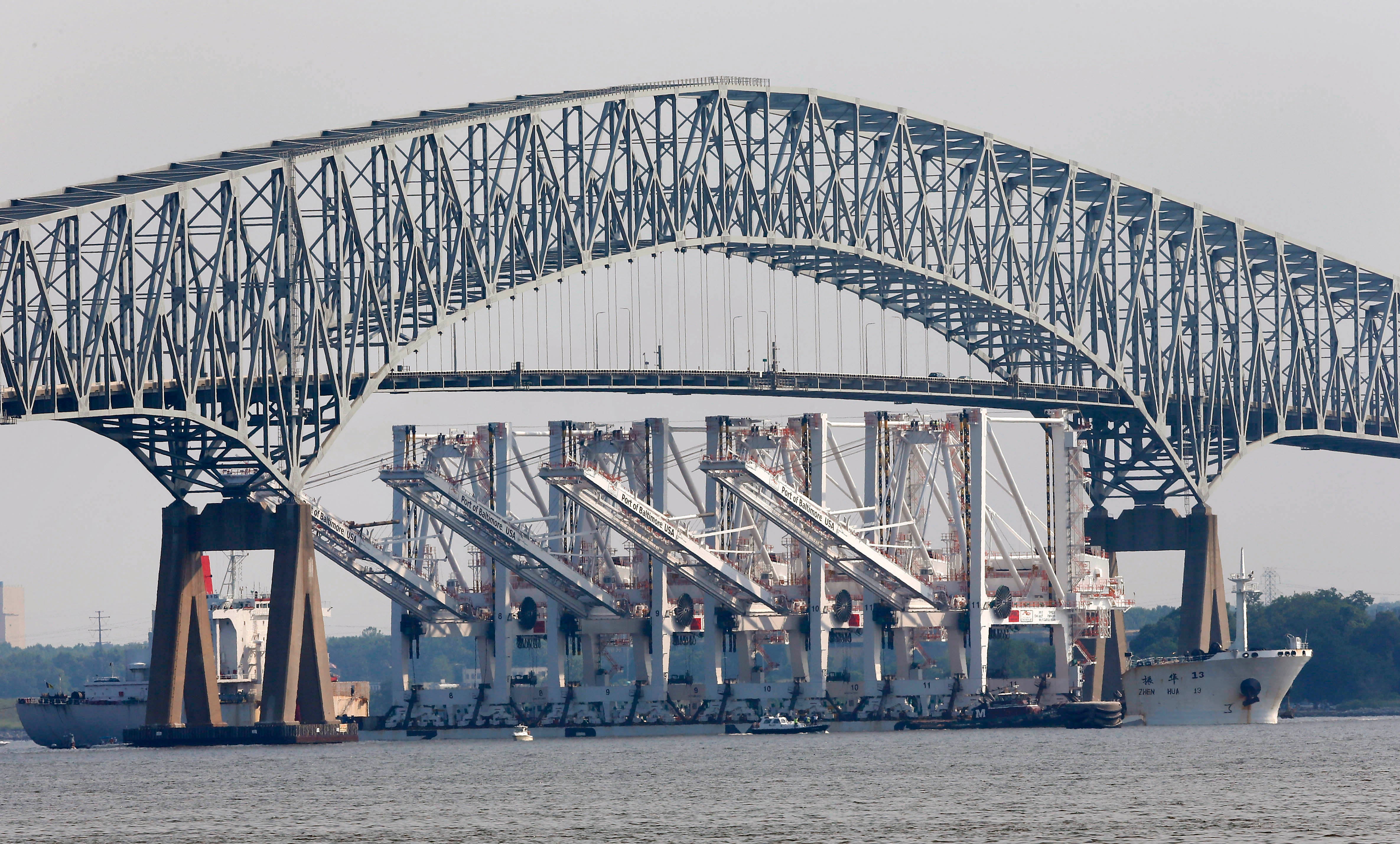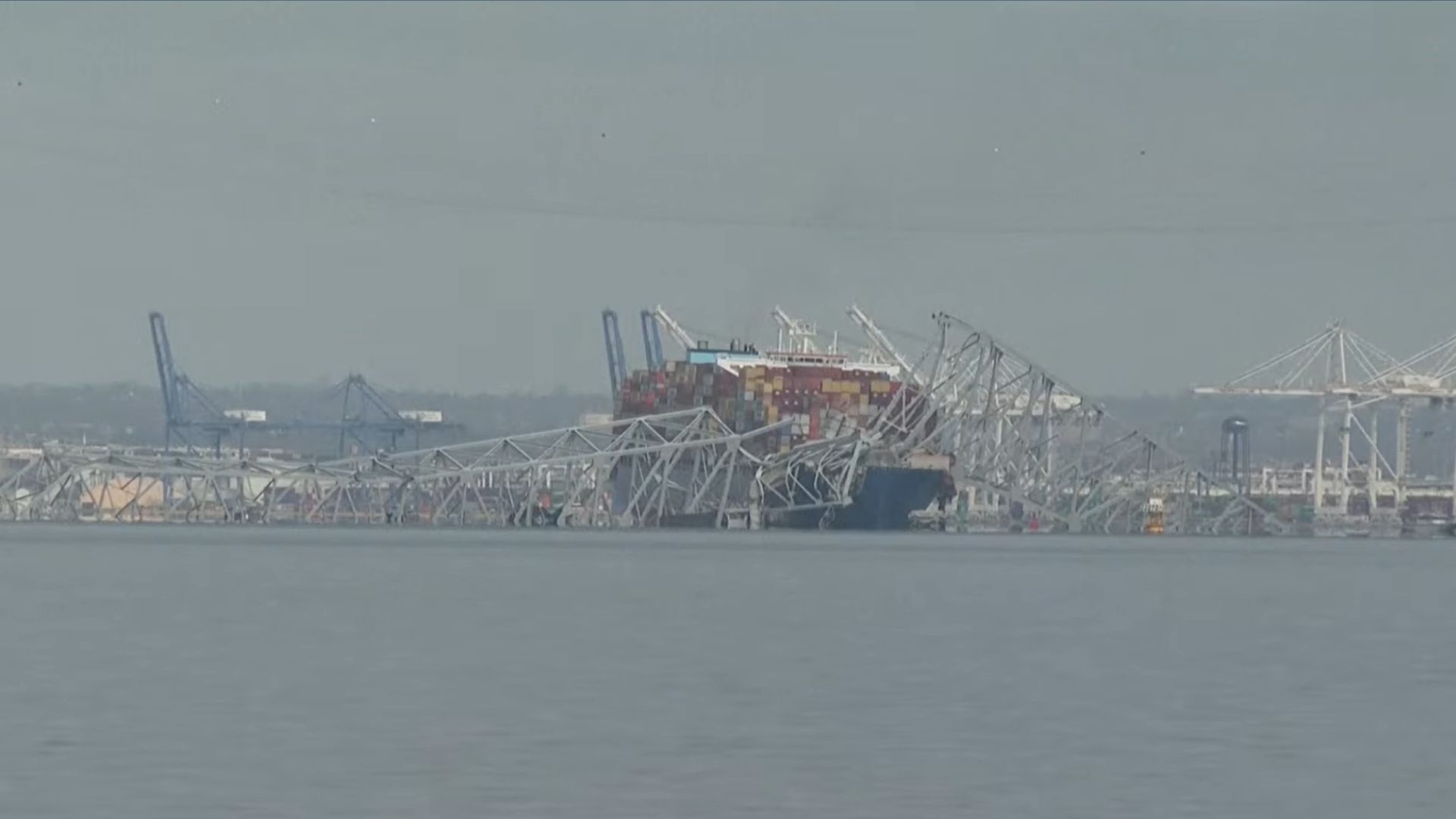Baltimore Bridge Collapse: The Untold Story Behind The Disaster
It’s not every day you hear about a bridge collapsing in one of America’s historic cities. But when it happened in Baltimore, it sent shockwaves across the nation. The Baltimore bridge collapse has been making headlines, and for good reason. It’s not just about a structure falling apart; it’s about the safety of millions who rely on these infrastructures every day. So, buckle up, because we’re about to dive deep into this story that’s as shocking as it is important.
When you think about bridges, you probably think of them as solid, unshakable structures that connect cities and communities. But what happens when those very bridges become a danger instead of a solution? That’s exactly what unfolded in Baltimore, and it’s a wake-up call for everyone involved in infrastructure management. This isn’t just a local issue; it’s a national concern that affects us all.
Now, before we get into the nitty-gritty details, let’s take a moment to reflect on why this matters. The Baltimore bridge collapse isn’t just a random event; it’s a symptom of a much larger problem. Aging infrastructure, lack of maintenance, and budget cuts are all contributing factors that we need to address. And trust me, this isn’t the first time we’ve seen something like this happen. But it might just be the wake-up call we need to finally take action.
Table of Contents
- Biography: The History of the Bridge
- What Happened: A Day to Remember
- Causes of the Baltimore Bridge Collapse
- The Impact on Baltimore
- Safety Concerns Across the Nation
- Government Response and Action
- Long-Term Solutions for Aging Infrastructure
- Lessons Learned from the Collapse
- Community Efforts to Rebuild
- The Future of Infrastructure in America
Biography: The History of the Bridge
Every great structure has a story, and the bridge that collapsed in Baltimore is no exception. Built back in the 1950s, this bridge was designed to withstand the test of time. But as we all know, time can be a cruel force when it comes to infrastructure. Let’s take a quick look at the history of this iconic structure:
Key Facts About the Bridge
| Year Built | 1952 |
|---|---|
| Original Purpose | Connecting major highways |
| Material Used | Steel and concrete |
| Capacity | Handled over 50,000 vehicles daily |
Back in its heyday, this bridge was a symbol of progress and innovation. It connected communities, facilitated trade, and played a crucial role in the city’s economy. But over the years, the wear and tear of constant use began to take its toll. And unfortunately, the necessary maintenance was either delayed or ignored altogether.
What Happened: A Day to Remember
The day the Baltimore bridge collapse occurred will forever be etched in the memory of those who witnessed it. It was a typical Tuesday morning, with commuters heading to work and students heading to school. But then, without warning, the unthinkable happened. The bridge gave way, sending cars and debris plummeting into the water below.
- Bryce Adams Leaks What You Need To Know New Info
- Kannada Movies Your Guide To New Releases Where To Watch
Emergency services were on the scene within minutes, but the damage had already been done. Thankfully, due to the quick response of first responders, there were no fatalities. However, the incident left many injured and caused millions of dollars in damages. It was a stark reminder of how fragile our infrastructure can be.
Causes of the Baltimore Bridge Collapse
So, what exactly caused the Baltimore bridge collapse? Well, as with most disasters, there’s no single factor to blame. Instead, it’s a combination of issues that have been building up over time. Here’s a breakdown of the main causes:
- Aging infrastructure: The bridge was over 70 years old and had not received the necessary updates or repairs.
- Lack of maintenance: Regular inspections and maintenance were either skipped or inadequately performed.
- Budget constraints: Funding for infrastructure projects has been consistently slashed, leaving vital repairs undone.
- Environmental factors: Extreme weather conditions, such as heavy rains and temperature fluctuations, can weaken structural integrity over time.
It’s clear that a lack of foresight and investment in infrastructure maintenance played a significant role in this disaster. And if we don’t learn from this, we risk seeing similar incidents in other parts of the country.
The Impact on Baltimore
The effects of the Baltimore bridge collapse were felt far and wide. For starters, it disrupted daily life for thousands of residents who relied on the bridge for their commutes. But the impact went beyond just transportation. The local economy took a hit, as businesses struggled to get goods and services delivered on time.
Moreover, the collapse raised serious questions about the safety of other bridges in the city. Residents began to wonder if the structures they drove on every day were as safe as they thought. It was a wake-up call for everyone involved, from city planners to ordinary citizens.
Short-Term vs. Long-Term Effects
While the immediate effects were obvious, the long-term consequences are still unfolding. The city has had to allocate significant resources to repair the damage and ensure that similar incidents don’t happen again. But the bigger question remains: how do we prevent this from happening in the future?
Safety Concerns Across the Nation
The Baltimore bridge collapse isn’t an isolated incident. Across the United States, there are thousands of bridges that are considered structurally deficient. According to a report by the American Society of Civil Engineers, one in every ten bridges in the country falls into this category. That’s a staggering statistic that should concern us all.
So, what’s being done to address these safety concerns? Well, it’s a complex issue that requires collaboration between federal, state, and local governments. Funding needs to be prioritized, and stricter regulations need to be put in place to ensure that bridges are inspected and maintained regularly.
What Can Be Done?
- Increase funding for infrastructure projects
- Implement stricter inspection protocols
- Invest in new technologies for monitoring bridge health
- Encourage public-private partnerships to share the financial burden
It’s not just about fixing the bridges that are already in trouble; it’s about preventing future disasters by investing in sustainable infrastructure solutions.
Government Response and Action
When disaster strikes, the government’s response is crucial in determining the outcome. In the case of the Baltimore bridge collapse, local and federal authorities sprang into action. Emergency funds were allocated to repair the damage, and a task force was established to investigate the causes of the collapse.
But the government’s role doesn’t end there. Long-term solutions need to be put in place to ensure that this doesn’t happen again. That means investing in infrastructure, both in terms of money and expertise. It also means holding accountable those who neglected their responsibilities when it came to maintaining these vital structures.
Long-Term Solutions for Aging Infrastructure
So, what are the long-term solutions for addressing the issue of aging infrastructure? Well, it’s not just about throwing money at the problem. It’s about creating a comprehensive plan that addresses the root causes of the issue. Here are some ideas:
- Develop a national infrastructure strategy that prioritizes high-risk areas
- Encourage innovation in construction materials and techniques
- Implement a system of incentives for municipalities that maintain their infrastructure properly
- Invest in public awareness campaigns to educate citizens about the importance of infrastructure maintenance
These solutions require collaboration between all levels of government, as well as the private sector. But if we can get it right, we can create a safer, more sustainable future for everyone.
Lessons Learned from the Collapse
Every disaster offers an opportunity to learn and grow. The Baltimore bridge collapse was no exception. Here are some of the key lessons we can take away from this incident:
- Don’t neglect maintenance; it’s cheaper in the long run
- Invest in technology that can help monitor infrastructure health
- Hold accountable those responsible for maintaining public infrastructure
- Encourage community involvement in infrastructure planning
It’s not just about fixing the problem; it’s about preventing it from happening in the first place. And that requires a shift in mindset from all of us.
Community Efforts to Rebuild
In the wake of the disaster, the community of Baltimore came together in a show of resilience and determination. Local businesses donated resources, volunteers helped with cleanup efforts, and residents rallied to support one another. It was a powerful reminder of the strength of community spirit in times of crisis.
But the work doesn’t stop there. The community continues to advocate for better infrastructure and safer roads. They’ve organized petitions, held town hall meetings, and lobbied their representatives for change. It’s a testament to the power of collective action and the desire for a better future.
The Future of Infrastructure in America
As we look to the future, the question remains: what does the future of infrastructure in America look like? Will we continue to see bridges collapsing and roads crumbling, or will we take the necessary steps to create a safer, more sustainable system?
The answer lies in our willingness to invest in the future. It’s not just about fixing the problems we have today; it’s about building a system that can withstand the challenges of tomorrow. That means embracing new technologies, fostering collaboration between stakeholders, and prioritizing the safety of our citizens.
Conclusion
In conclusion, the Baltimore bridge collapse was a wake-up call for all of us. It highlighted the urgent need for investment in infrastructure and the importance of regular maintenance. While the immediate effects of the disaster were devastating, they also provided an opportunity for growth and change.
So, what can you do? Start by educating yourself about the state of infrastructure in your community. Advocate for change by contacting your representatives and supporting initiatives that prioritize infrastructure development. Together, we can create a safer, more sustainable future for everyone.
And don’t forget to share this article with your friends and family. The more people who are aware of the issue, the greater the chance we have of making a real difference. Let’s work together to ensure that disasters like the Baltimore bridge collapse become a thing of the past.



Detail Author:
- Name : Mr. Cornell Lynch DDS
- Username : grace.hauck
- Email : mueller.davon@hotmail.com
- Birthdate : 2001-04-24
- Address : 5883 Grady Ridges East Francisca, NH 00106
- Phone : 680-419-7459
- Company : Moore-Reilly
- Job : Production Inspector
- Bio : Dolor qui voluptatem quia. Expedita dolor corporis omnis impedit. Doloribus nostrum qui et qui autem sed totam.
Socials
instagram:
- url : https://instagram.com/clare_quitzon
- username : clare_quitzon
- bio : Ad laborum rerum quia ut. Modi voluptas aut est ipsa.
- followers : 6658
- following : 440
tiktok:
- url : https://tiktok.com/@quitzon2019
- username : quitzon2019
- bio : Aliquid sapiente id sit eligendi aut voluptatibus quibusdam a.
- followers : 5193
- following : 2439